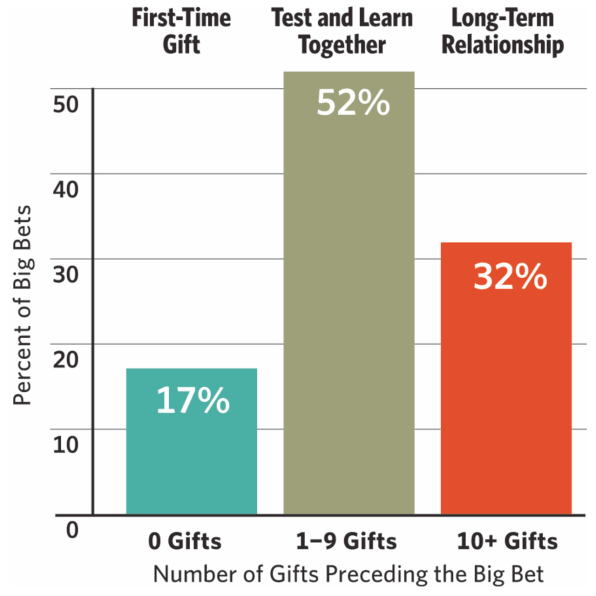Why “later” is one of the most destructive terms in philanthropy
There are a lot more super-rich people in the world compared to just a couple of decades ago. The rate of billionaires, for instance, has jumped sevenfold since the early ’90s–to above 2,200. And while most of those billionaires make an effort to give some money to charity, taking a look at how those extra (extra!) deep pockets help others, however, and you might be disappointed.
In total, the richest placed only 69 “big bets” of $25 million or more toward major cause work in 2017. (A big bet is an immediate and outsize gift with the intention of sparking immediate change.) That number has remained in roughly the same ballpark in recent years. A lot of the problem hinges on just one word. “I think the biggest competition or threat to giving is later,” says William Foster, the head of nonprofit consultancy Bridgespan. “I think people always feel like they can do more later. People generally see their big giving days around the corner as opposed to today.”
That’s not because the donors aren’t interested. Or because organizations aren’t soliciting them hard enough. Many cause groups may just be going about their major requests in the wrong way. “It’s not the impossible task of meeting somebody you’ve never met before and in one meeting turning their mind. That just doesn’t happen that much,” Foster adds. “With almost every nonprofit leader we’ve ever supported, they actually have more relationships than they fully appreciate. And so the question is, how do you take the relationships you have to their full potential.”
To explore that, Bridgespan has published a multi-part report series entitled “Unleashing Philanthropy’s Big Bets for Social Change.” The articles are part of a paid supplement in Stanford Social Innovation Review, in part because it’s an easy way to deliver a high volume of change-making research directly to those who will use it. In one section called “Becoming Big Bettable,” Foster and several coauthors lay out a five-step plan for organizations seeking outsized gifts reframe their pitch. That includes explaining why now (“Important Problem”), what the future could really look like (“Point of Arrival”), how best to get there (“Credible Path”), why philanthropy is key for that (“Why Philanthropy”), as well as why your group is the one to make it all happen (“Strong Leader and Team”).
Overall, Foster points out that delays don’t just cost groups the chance to immediately impact problems before they spiral: The longer donors wait to get involved, the harder it may be to help them develop the learning curve necessary to give in a smart way, especially if they want to make an impact within their own lifetimes.

Based on an analysis of 165 grants of $10 million or more between 200 and 2012, Bridgespan found that big-bet donors tended to give smaller sums before making a huge commitment. As the graph shows, well over 80% of those big bets came after establishing a relationship and track record with the group that received it. Almost one-third of those bets took 10 or more transactions (although the most common number was four). Eventually, Foster points out that a “step change” occurs. When donors place their big bets they tend to average 10 times the previous grant sum.
The report also calls out “force multipliers”: 21 U.S.-based big bet makers who have made more than one extreme investment per year between over the last few years. That includes some familiar names like the Gates Foundation, Bloomberg Philanthropies, and Blue Meridian Partners, among others. But many of these organizations also award smaller grants, which is a decent place to start.
To repeat: “It’s not about finding someone you’ve never met before. It’s about taking your supporters and, and helping them see the possibilities of what you do in a way that everyone involved can believe in the enduring and sustaining change,” Foster says. Many groups still emphasize the broader problems they’re trying to fix instead of honing their strategic plans to both solve that and explain their battle plan to others they’re trying to recruit. As Foster puts it: “What can be changed in the world, and how does it endure?”
(37)



